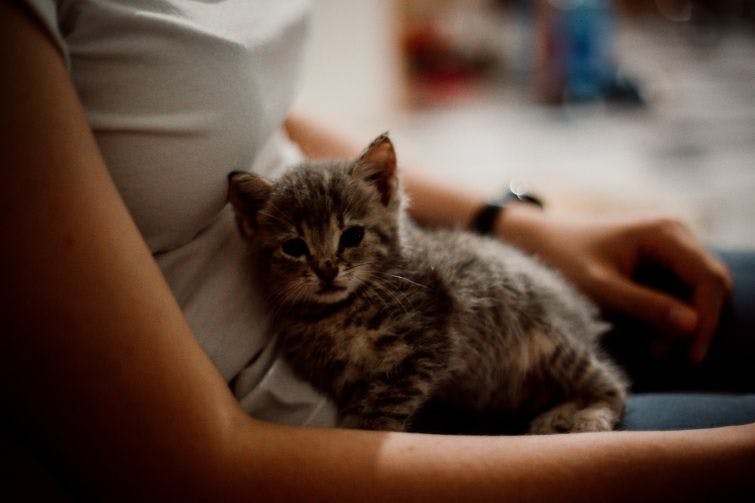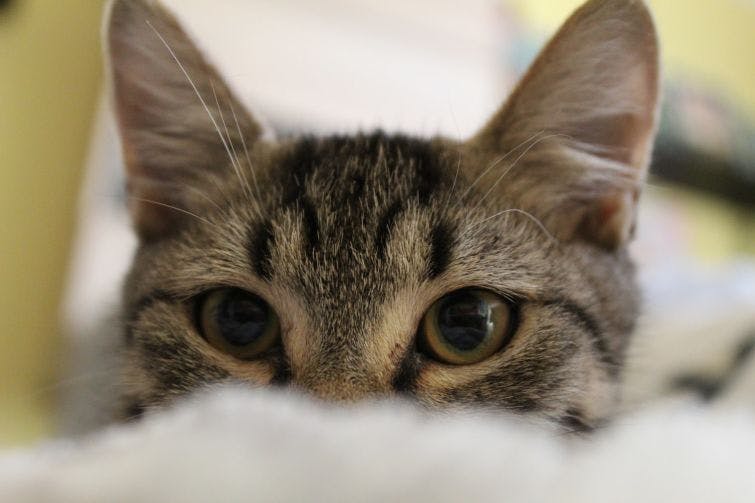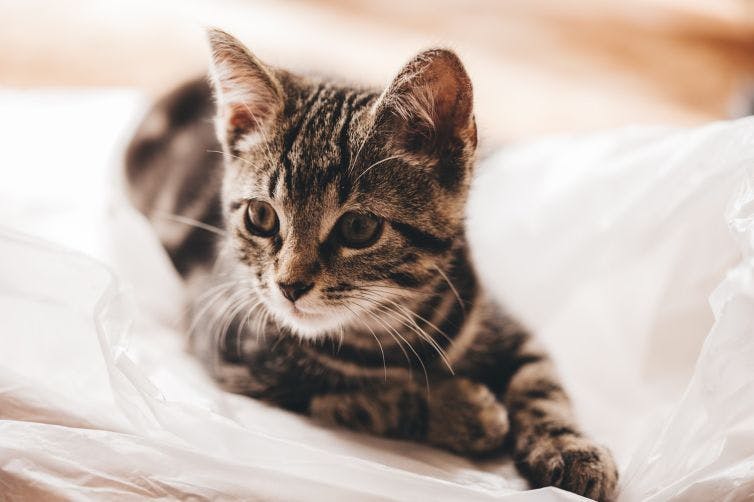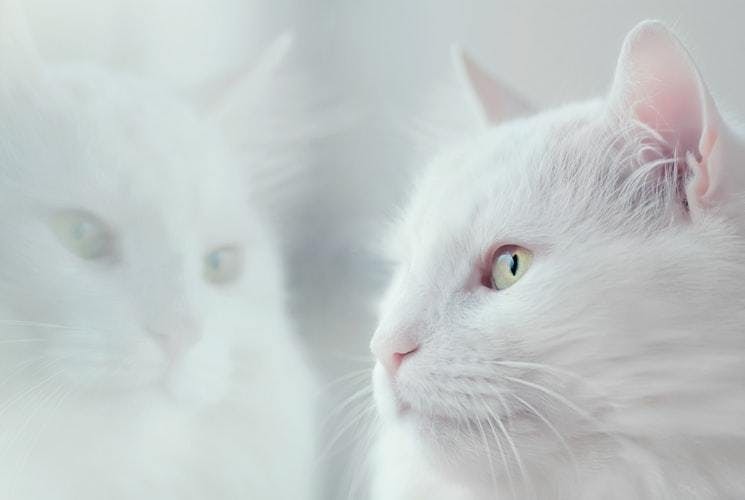Once again the time has come for your cat to pay a visit to the vet. Ugh! Your cat is scared, you're stressed, everything is a hectic mess. Don't worry, we can help! Here are our top ten tips that will help you make your cat's vet visit less stressful.
1. Reflect on your own emotional state
Animals sense our emotions very well. If you're feeling uneasy, your cat will pick up on it. On the day of the visit, it is important to remain calm and to stick to your normal routine as much as possible. Even the subtlest changes to your energy and schedule may make your cat suspicious and anxious. If the cat notices that you’re nervous, it will sense that there must be a reason for it. This might lead it to fear the vet visit itself too. Therefore, try to put up a brave face and keep things simple and cheerful. This should help relief some of your cat's anxiety about the visit. To help yourself relax and remain on top of things to attend to all the details ahead of time. Make a list of recent medical concerns or questions you want to ask your vet, prepare your pet’s documents, medical history and anything else you might need.
2. Get your pet used to handling
Some animals, especially cats, find it stressful to be handled. The easiest way to get your animal used to being handled is to start when they’re young. Exercise with your kitten by gently picking up its paws, handling its toes and inspecting its ears. Touch it around the tummy and chest area. Treat your kitten in between poking so they associate this with something positive. If you’re working with an adult cat it will require a lot more effort, but with the right amount of patience and consistency – it is certainly doable.

3. Use a familiar crater
Cats are very territorial animals. Being away from their known and safe surrounding is stressful for them. Using a transporter your cat is familiarized with will offer them some safety, consistency and liability. Avoid using craters dedicated strictly for vet visits because cats will likely associate these transporters with the visits and become anxious and tense before you even arrive to the vet office. Instead, train your cat to love its transporter and associate it with good things. The best way to do this is to keep a transporter somewhere in the house accessible to the pet so it will get acquainted and familiarized with it. Use it to take your pet to short trips that they love or just provide a comfortable hiding/sleeping spot for them inside it.
4. Pack some treats and a 'security blanket'
Whether it really is a blanket, a stuffed animal or any other toy, pack your pet’s favorite item that may help them feel more secure and relaxed. Even an old t-shirt or a towel that just smells familiar could be helpful. These are the things that are familiar and bring happy memories and associations to the animal. Also, don't forget their favorite treats – they always come in handy. Treating your pet after the vet visit may help them realize the visits don’t have to be so negative and scary.
5. Familiarize your pet with the car
While dogs often ride in cars for many different occasions, most cats actually ride in cars only for the vet visits. This creates negative associations with the actual car rides. So, once you familiarize your cat with its crater, try to train it to love the car too. One way to do this is to simply take your cat by car to places other than the vet’s office. Take it to the park or to its friend’s house. Let it experience and associate diverse happy occasions with the car rides, which should make the whole experience of a vet visit less stressful too.

6. Familiarize your pet with the vet and his office
Most of us go to the vet’s office only when it is necessary – either for a regular check-up, a vaccination shot or due to an emergency. These are all uncomfortable visits for any animal. What you can do to help your pet associate some good memories with the vet's office too is to bring them there when it isn’t a necessity and it isn’t scary. If you can, bring them with you when you’re just coming for a quick advice or chat with the vet or when you’re coming in for a purchase (given that your vet office also has a vet pharmacy). Give your cat a chance to play with another pet there or just meet up with the staff. Although easier said than done, this is a broadly recommended tip by many vets, including Robin Bennett, a certified professional dog trainer and author and board chair of the Association of Professional Dog Trainers.
7. Make an appointment
Whenever possible try to schedule an appointment with the vet on a day and time when there’s least traffic in the office. Otherwise, talk to your vet and find out which hours are generally least busy. This way you will avoid the crowd, reduce the waiting time in the waiting room and make the vet visit less stressful than it has to be for your cat. If coming during the rush hours is inevitable and waiting in the waiting room is too stressful for the animal, simply wait outside or in the car. Just let the staff know where they can find you.
8. Resist the urge to “calm” your pet
While packing, traveling and waiting in the vet's waiting room, you should definitely talk to your pet in a calm tone as you normally would. This would give them a sense of confidence and consistency. If you change your behavior towards your pet during the visit it can signal to them that something is out of the ordinary. However, if your pet is very nervous then talking to them in a soothing tone may actually make things worse. This is because this treatment would make them think you are encouraging their behavior. Try to resist the urge to pet and talk to your animal during these episodes and instead act as everything really is ok and nothing is out of the ordinary.

9. Keep your pet occupied
Don't let your cat focus on other animals and people if they're making them anxious or scared. Instead, try to keep them busy by stealing their focus on yourself, the treats, commands or toys.
10. Find a vet who uses "fear-free handling" techniques
Never hold your pet down or force them during the appointment, and don’t let the vet do it either. This creates panic and fear and it is ultimately what makes animals fear the vets in the first place. Terri Bright, Ph.D., director of Behavior Services at Angell Animal Medical Center in Massachusetts, explains that the biggest mistake she sees people making during the vet visits is muscling the animal through it. "You see a cat being held down by four people with cat gloves, or muzzling a dog, and five people are holding him down," she says. This is extremely stressful for any animal. That’s why you should be on the look-out for vets who practice gentler techniques of handling. Savvy vets will also always take a minute to chat with you and your pet prior to the check-up. This gives your pet a chance to smell the vet and get acquainted. After acquainting, they will approach an animal from the side rather than from the front in order to seem less scary and dangerous.

Hopefully, by applying a combination of the tips from above, your next visit to the vet’s office will be as stress-free as possible. Visiting the vet is inevitable and highly important in order to keep our pets healthy and happy. Do you have your very on tips on how to make a vet visit less stressful? Share with our other fur parents on social media!
